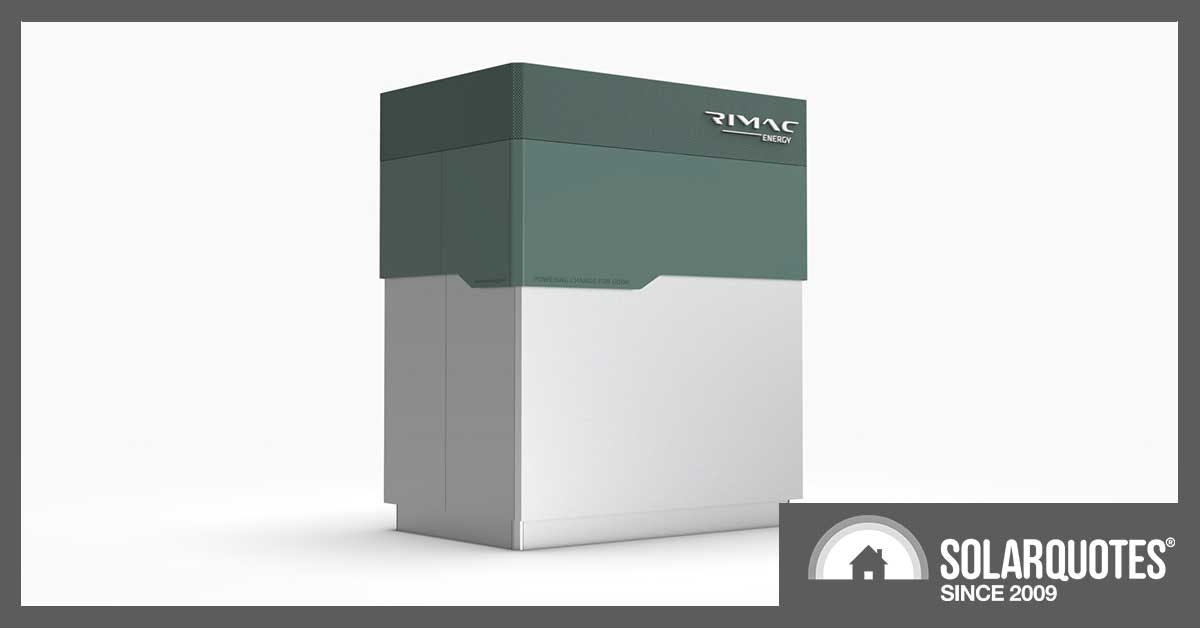
Image: Rimac
Electric supercar company Rimac has taken a step towards entering the stationary energy market, with the launch of the SineStack battery.
Don’t expect to install one of these at your house – this is not a home battery. SineStack is a giant 3-phase, 790 kWh usable capacity battery (equivalent to 58 Powerwalls) with an incredible 400 kW power output.
Rimac claims the SineStack battery will last a jaw-dropping 12,000 cycles. That’s a lifespan of 33 years if cycled daily. Skeptical? So are we.
| Specification | Value |
|---|---|
| Usable energy | 790kWh (832 kWh total) |
| Usable window | 95% |
| Output | 3 phase 400V AC |
| Rated power | 400kVA for 2 hours (0.5C rate) |
| Power factor | -1.0 to +1.0 |
| Maximum Total Harmonic Distortion (THD)1 | 3% at rated power |
| AC round trip efficiency | >92% |
| Dimensions | 2590 x 1950 x 1300mm |
| Volume | 6.566m³ |
| Cooling | water / glycol |
| Cycles | < 12,000 at 95% DoD |
| Chemistry | LFP |
| Volumetric energy density | 127 Wh/litre |
The launch of Rimac Energy by electric vehicle outfit Rimac Automobili was foreshadowed in an announcement earlier this year. The company’s Wasim Sarwar Dilov told an energy forum in Belgrade during May the firm wanted a stationary battery that was smaller, more efficient and less expensive than what’s currently on the market.
As an EV maker, Rimac’s claim to fame is the fastest production electric car available, the Nevera, which has a top speed of 412 kph.
Energy Storage News (ESN) says the SineStack was announced at the Energy Storage Summit Eastern Europe in late September.
SineStack is an interesting beast, at least to someone used to thinking of the battery solely in terms of its storage, inputs and outputs. It’s an “AC battery” – not only does it integrate the inverter inside the battery case, but there’s one inverter per battery module.
ESN reported the company’s product engineering manager Roger Moorehouse said this design approach means SineStack can offer independent control over all of the 18 modules in the battery. This allows for more granular balancing, more energy extracted from the cells, and a longer lifetime.
Moorehouse said the impressive specs are made possible by the vertical integration Rimac has “across the whole system”.
Production is due to begin in Zagreb, Croatia in 2025.
Footnotes
- In a three-phase inverter system connected to a battery energy storage system, THD will measure how much the output voltage or current waveform deviates from a perfect sine wave over one cycle. A lower THD percentage indicates cleaner, more “ideal” power output, which is generally better for both the grid and the connected electrical equipment. ↩

 RSS - Posts
RSS - Posts



Speak Your Mind